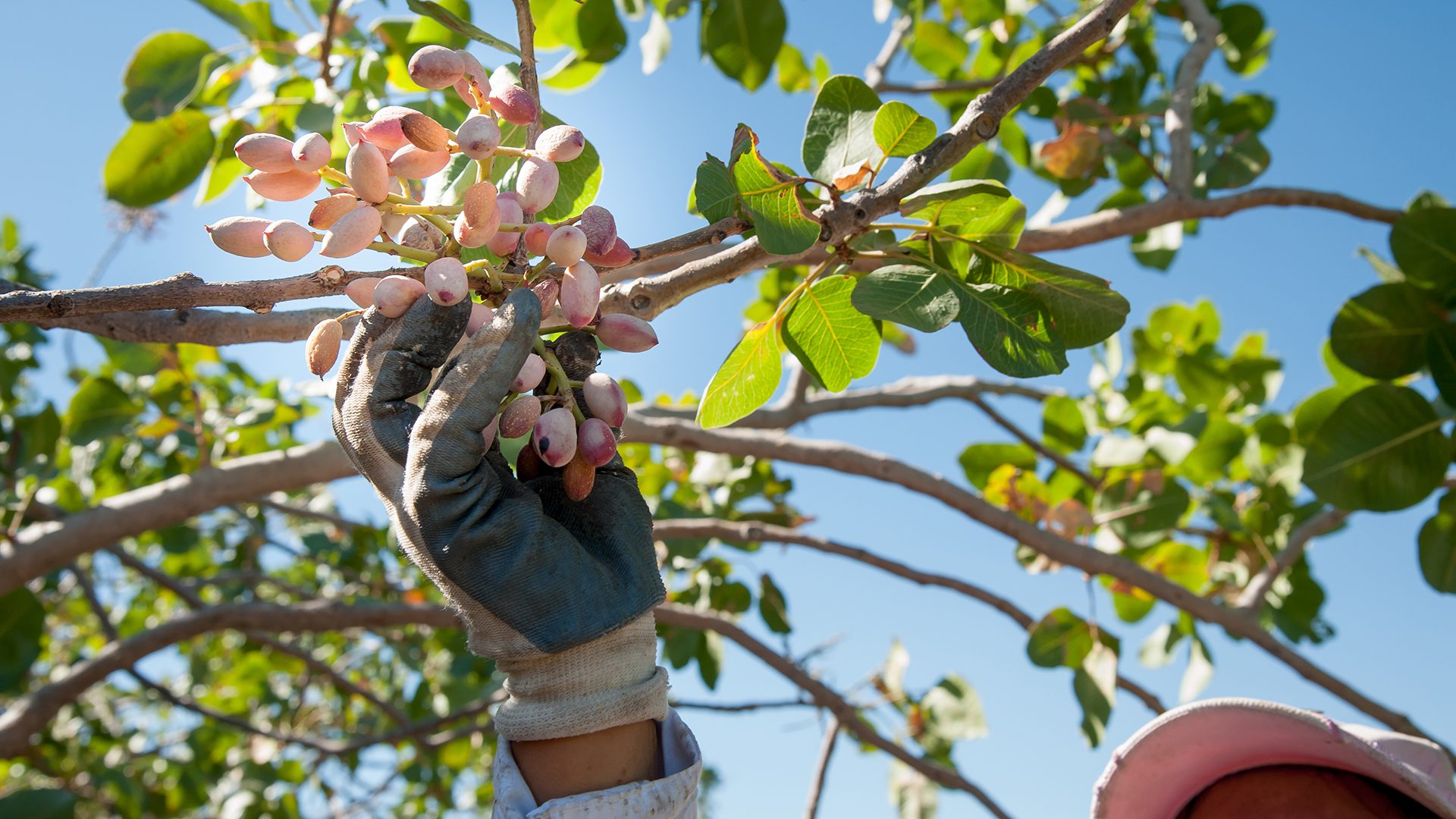First Phase: The Harvesting
The harvesting is biennial and is performed in odd years in the months from the end of August to the beginning of September. The harvesting phase is an extremely delicate phase.
It is carried out completely by hand because the pistachio plant, growing on lava soil (in Sicilian “sciara”) does not allow the use of machinery and needs the help of specialized gathering teams that act directly on the pistachio shrubs and, gently pull them off, they drop the fruit into a container carried on the shoulder.
For Brontese families, this phase is as tiring as it is felt a very long-awaited celebration, a tradition that has been handed down from generation to generation in which the whole family participates in different tasks, from the oldest to the youngest.
Second Phase: The Removal of the Hull
After the first phase, through the mechanical action of the tape of a machine, the fruits are separated from their husk (the fleshy covering that covers it and that, when it becomes mature takes on an ivory white color that makes pistachio fruits similar to confetti). Pistachios in shell that is obtained is also known as tignosella.
Once the tignosella is obtained, we proceed with the third processing phase, the drying phase. Pistachios are placed in the so-called “stindituri”. Spread the nets on the floor of special greenhouses, the pistachio is laid in order to make it air homogeneously. On average, two to three days of hot Sicilian sun are needed to ensure that the fruit reaches the right degree of drying. This traditional method, slow and natural, gives the fruit that particular fragrance without equal.
Fourth phase: The Shelling
After shelling it is possible to proceed with the peeling of the pistachio. That is the elimination of the very thin violet endocarp which gently covers the fruit one last time.
The plant used consists of a “scald” where the seed is peeled, making it soak for a few minutes in hot water (about 90° C). Through the short soak the film that envelops the seed swells and then, passing through rubberised cylinders that rotate by rubbing, is torn up and the pistachio remains of its intense emerald green.
Sixth phase: Control and Selection




